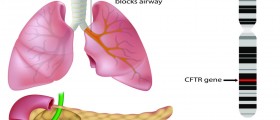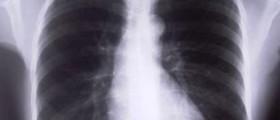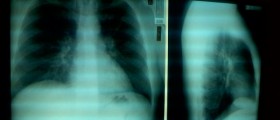
Wilson disease belongs to genetic disorders. It is inherited in an autosomal recessive fashion and is distributed equally between the two genders. Also known as hepatolenticular degeneration, the condition is blamed for inadequate elimination of copper from the body, its build-up in the liver and the central nervous system which in the long run results in severe damage to these structures. Fortunately, if Wilson's disease is diagnosed on time, irreversible damage to liver cells and nerves can be successfully prevented.
How is Wilson Disease Inherited?
Being an autosomal recessive genetic disorder makes Wilson's disease inheritable only when both parents are the carriers of the defective gene (genetic mutation). It is estimated that one out of 30,000 individuals of all people living on the planet develop the disease.
Scientists have managed to identify the exact gene affected by mutation, responsible for Wilson's disease. Namely, the mutation is located on the 13th chromosome and the affected gene is referred to as ATP7B. The very gene is in charge of copper transfer by participating in synthesis of ceruloplasmin, copper transport protein. Due to the defective gene, patients simple do not synthesize ceruloplasmin and all the copper entering the body remains within, not being excreted sufficiently. Build-up of this metal eventually triggers the symptoms of the disease and initiates damage to many organs, the liver and the brain in particular.
People with only one defective gene are carriers while those with 2 defective genes actually develop the disease. Experts estimate that around one out of 100 people are carriers of the defective gene.
Since the disease is genetic in nature if one child is confirmed to suffer from Wilson's disease it is best to test his/her siblings as well. Testing is also indicated in children of patients suffering from Wilson's disease. They may also have the disease but remain asymptomatic for a certain period of time.
Testing and Treatment
Testing of individuals whose parent is confirmed to have Wilson's disease is supposed to start at the age of 2. It can be repeated every 5 years. Now, in case of siblings, they should undergo thorough examination. Initially, doctors investigate their medical history and look for liver or neurological symptoms. Obligatory laboratory tests include liver function test and measuring the level of ceruloplasmin and copper in serum. The urine of the tested people should be collected and examined as well. Since most patients suffering from Wilson's disease develop characteristic eye changes known as Kayser-Fleischer rings, eye exam represents one more compulsory test. However, the absence of Kayser-Fleischer rings not exclude the disorder.
As far as genetic testing is concerned, it is indicated in practically all patients and their siblings. Even family members in whom laboratory tests are optimal and there are no signs of the disease should undergo this type of exam.
When it comes to treatment it basically comprises medications that efficiently reduce the amount of copper in the body. Chelating agents help the body to eliminated copper from the organs the metal is prone to accumulate in. They bond with copper and they get excreted all together via the kidneys.
Additional help is obtained from medications that can prevent absorption of copper from the intestine. Zinc acetate, for example, binds with copper and prevents its absorption. It may be prescribed in patients who have finished the course of chelating agents to maintain optimal level of copper in the blood or is sometimes administered even in asymptomatic individuals.
Liver transplant surgery is performed only if excess of copper triggers irreversible damage to the organ i.e. if one develops liver cirrhosis and eventually ends up with with total liver failure.
Dietary Considerations with Wilson's disease
Once the condition is confirmed all patients make dietary changes and adopt a low copper diet. Foods rich in copper such as organ meats, shellfish, chocolate, nuts and mushrooms are completely eliminated from one's diet. Unfortunately, such diet is not the only solution for these patients. It is in fact an additional approach apart from standard medications patients are prescribed.
Drinking water may also contain certain amounts of copper. This is the reason why it should be tested and if the amount of copper exceeds 0.1ppm, patients are due to switch to alternative sources or perhaps think about purchasing a system that will eliminate copper via the process of filtration.
It may sound amazing but copper can be also absorbed in case the food is prepared in a copper made cookware. Logically, cookware containing copper should never be used.
And finally, many supplements contain copper. Therefore, prior to taking any of these people with Wilson's disease are due to consult their health care providers. This particularly refers to women with Wilson's disease who need to take prenatal vitamins, most of which contain copper.
To sum up, Wilson disease might be severe if copper starts to accumulate inside the body uncontrollably. On the other hand, it can be perfectly controlled with medications and dietary changes. This makes Wilson's disease a bit different from other genetic disorders, since many of them cannot be controlled and cause detrimental damage to many organs/organ systems in the body.

















Your thoughts on this
Loading...